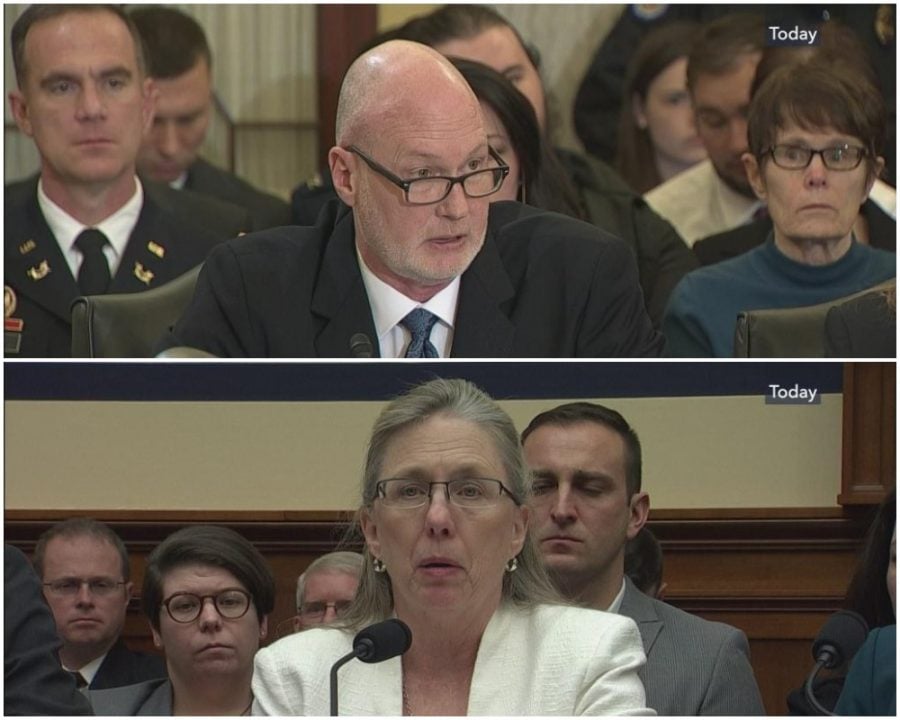A startling trend among the ranks of the U.S. military continues to rise with the most recent results from the Department of Defense’s Annual Report on Sexual Assault released last week. The report indicated a 50 percent increase in sexual assaults experienced by women in the military since 2016.
Despite women composing just below 20 percent of the armed forces, they account for 63 percent of military sexual assault victims with young and low-rank women most at risk, according to the survey.
“What [this increase] reflects is the stubbornness, the selfishness of the DoD leadership to seriously address this issue,” said Col. Don Christensen, a retired Air Force JAG and the president of Protect Our Defenders, a nonprofit organization dedicated to ending military sexual assault. “They’re refusing to consider any bold reforms and after 30 years of failure, this is on them. They are the ones that are failing and obstructing change and it’s time that they’re held accountable.”
This year, the military also saw 1 in 3 service members report a sexual assault, a 10 percent increase in reporting overall from two years ago.
Additionally, 21 percent of women experienced what would legally be considered retaliation while even more allege to have endured other forms of backlash. Reported instances range anywhere from extreme social ostracism to the lowering of rank and even a mandatory dishonorable discharge from the service.
Historically, sexual assault within the military has been highly under-reported, drastically skewing statistics.
As a measure to bridge that data gap in 2005, the DoD enacted a biannual anonymous survey to get more accurate results.
Nearly 15 years later, the report appears to indicate the crisis is worsening.
Many survivors indicate that a major hurdle to reporting incidents of sexual assault is that the cases remain within the chain of command, meaning it’s often a survivor’s direct commander who is in charge of following through with the report. Importantly, this often means that those handling the cases are unqualified for the job.
“I guarantee you the vast majority of the commanders who have this authority have never sat down and talked to a victim,” Christensen said. “They don’t know what they go through. They don’t understand the complexity of trauma and they’re not lawyers.”
The military has put in place training sessions to educate all service members on sexual assault prevention and response. According to Christensen, these sessions often amount to little more than a PowerPoint presentation taught by equally inexperienced instructors.
“It’s amateurs leading other amateurs,” he said. “You do not become good at understanding and prosecuting sexual assault from a slideshow.”
Despite this, some argue the response to reported incidents of sexual assault should come from within the military hierarchy to maintain order and disciplinary control. Another argument is that removing chain of command would lessen a unit’s ability to function as a whole.
Ellen Haring, a retired Army colonel and the CEO of the Service Women’s Action Network, disagrees.
“Yes, commanders need to be able to discipline their troops, but there are some behaviors that are bubbling beyond their ability or their qualifications to discipline,” Haring said.
Removing sexual assault cases from the chain of command, Haring said, would send a message that there are things that commanders do not have the capacity to decide.
“And this is one of them, and it’s a serious crime,” Haring said. “That’s why they’re not able to make these decisions.”
At the same time, it may also be hurting the military’s ability to attract new members.
“We do know that services are struggling now to meet their recruiting goals,” Christensen said. “When they rely on women, and in fact could not perform the mission without women, you would think that they would be more attuned to the impact this could have.”
The continued ineffectiveness of the current process also contributes to a deep distrust of the system amongst victims. Haring attributes much of this crisis to the current cultural trends both in the military and in America at large.
Specifically she pointed to the Marine Corps, the service branch that saw the highest increase in sexual assaults — a jump of nearly 25 percent. Directly related to that, Haring said, is the fact that the Marines are the only branch that still separates men and women when recruits arrive at boot camp for training.
“There is no industry where you’re completely safe,” she said. “Especially if it’s one of these industries or professions that have been and continue to be masculine and male dominate. I don’t know where women can go to work to be completely safe.”



